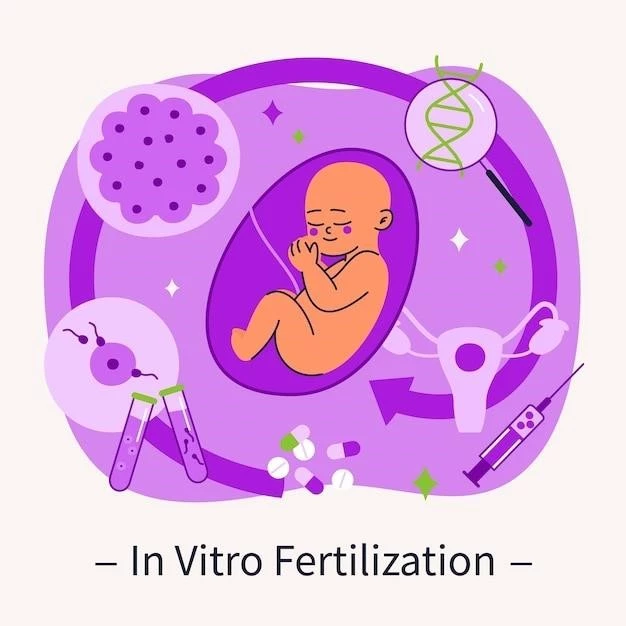Intestinal Malrotation Facial Anomalies Familial Type
When it comes to the disease of Intestinal malrotation with facial anomalies, familial type, it is crucial to understand the complexities involved. From the genetic underpinnings to the clinical presentations and treatment options, this condition requires meticulous attention.
I. Overview of Disease
Intestinal malrotation with facial anomalies, familial type, is a rare genetic condition that affects the digestive system in pediatric patients. It is characterized by a combination of developmental abnormalities in the intestines and facial features that are inherited within families.
The condition is caused by a genetic mutation that leads to the abnormal development of the intestines in the early stages of embryonic growth. This malrotation of the intestines can result in chronic digestive issues and may require surgical intervention to correct.
In addition to the intestinal malrotation, individuals with this condition may exhibit distinct facial anomalies that are consistent within affected families. These facial features can vary in severity and may aid in the diagnosis of the condition.
Due to the hereditary nature of this disease, it is essential for medical professionals to have a thorough understanding of the genetic and clinical aspects of intestinal malrotation with facial anomalies, familial type. Early diagnosis and appropriate management are crucial in optimizing outcomes for patients affected by this rare medical condition.
II. Genetics and Inheritance
The disease of Intestinal malrotation with facial anomalies, familial type, has a significant genetic component. It is inherited in an autosomal dominant pattern, meaning that a single copy of the mutated gene from either parent is sufficient to cause the condition in their offspring. This mode of inheritance explains the familial nature of the disease, where multiple generations within a family may be affected.
The genetic mutation responsible for this condition affects the development of the intestines and facial structures during fetal growth. The mutated gene disrupts the normal processes that determine the correct positioning of the intestines and the formation of facial features, leading to the characteristic abnormalities seen in affected individuals.
Genetic testing plays a crucial role in diagnosing Intestinal malrotation with facial anomalies, familial type. Identifying the specific genetic mutation can help confirm the diagnosis, guide treatment decisions, and provide valuable information for family counseling. Understanding the underlying genetics of the disease is essential for comprehensive management and care of patients with this rare inherited condition.
Given the hereditary nature of the disease, genetic counseling is recommended for individuals and families affected by Intestinal malrotation with facial anomalies, familial type. This specialized service can provide information on the risk of passing the condition to future generations, discuss reproductive options, and offer emotional support to cope with the implications of the genetic diagnosis;
III. Clinical Presentation
The clinical presentation of Intestinal malrotation with facial anomalies, familial type, can vary widely among affected individuals. In pediatric patients, the disease may manifest with a combination of symptoms related to digestive system abnormalities and distinct facial features that are characteristic of the condition.
Children with Intestinal malrotation may experience chronic gastrointestinal issues such as abdominal pain, bloating, vomiting, and feeding difficulties. These symptoms can be recurrent and severe, impacting the child’s nutritional status and overall quality of life. Additionally, complications such as bowel obstruction or volvulus (twisting of the intestines) may occur, requiring urgent medical attention.
Facial anomalies associated with the condition can include abnormalities in craniofacial structures, such as cleft lip or palate, facial asymmetry, and ear malformations. These features are typically present at birth and may aid in the clinical diagnosis of the disease. The severity of facial anomalies can vary, with some individuals exhibiting subtle changes while others may have more pronounced abnormalities.
Due to the diverse clinical presentation of Intestinal malrotation with facial anomalies, familial type, healthcare providers must be vigilant in recognizing the combination of digestive system issues and specific facial characteristics that raise suspicion for this rare genetic condition. A thorough evaluation, including genetic testing and imaging studies, is essential for accurate diagnosis and appropriate management of affected patients.
IV. Diagnosis and Testing
Diagnosing Intestinal malrotation with facial anomalies, familial type, requires a comprehensive approach that integrates clinical evaluation, imaging studies, and genetic testing. Healthcare providers must be familiar with the distinctive features of the condition to accurately diagnose and manage affected individuals.
Imaging studies such as abdominal ultrasound, upper gastrointestinal series, or computed tomography (CT) scans play a crucial role in confirming the diagnosis of Intestinal malrotation. These imaging modalities can reveal the abnormal positioning of the intestines and provide valuable information about any associated complications, such as bowel obstruction.
In addition to imaging studies, genetic testing is essential in identifying the specific genetic mutation responsible for the disease; Genetic analysis can confirm the diagnosis of Intestinal malrotation with facial anomalies, familial type, and provide valuable information for genetic counseling and family planning.
Clinical evaluation of pediatric patients suspected to have the condition should include a thorough assessment of digestive system symptoms, growth and development, as well as a detailed examination of facial features for any anomalies. A multidisciplinary approach involving pediatricians, geneticists, radiologists, and surgeons is often necessary to ensure a comprehensive evaluation and accurate diagnosis.
Early and accurate diagnosis of Intestinal malrotation with facial anomalies, familial type, is essential for initiating timely interventions and preventing potential complications associated with the disease. Healthcare providers should maintain a high index of suspicion for this rare genetic condition in pediatric patients presenting with a combination of digestive system abnormalities and distinctive facial features.
V. Treatment Options
Managing Intestinal malrotation with facial anomalies, familial type, requires a tailored approach that addresses both the digestive system abnormalities and the associated facial anomalies. Treatment options for this rare genetic condition may involve a combination of medical interventions and surgical procedures.
Children diagnosed with Intestinal malrotation often require surgical correction to reposition the intestines and prevent complications such as bowel obstruction or volvulus. The surgical procedure, known as Ladd’s procedure, involves untwisting the intestines, removing any obstructions, and fixing the intestines in their proper anatomical position.
In cases where facial anomalies are present, additional interventions from an experienced craniofacial team may be necessary to address specific facial abnormalities. Treatment options for facial anomalies can include reconstructive surgery, orthodontic interventions, or speech therapy, depending on the nature and severity of the facial features.
Long-term management of Intestinal malrotation with facial anomalies, familial type, may involve ongoing monitoring by a multidisciplinary team of medical professionals. Regular follow-up visits with pediatricians, geneticists, surgeons, and other specialists are essential to track the child’s growth, development, and overall health.
Supportive care such as nutritional counseling, feeding therapy, and psychosocial support may also play a crucial role in the comprehensive management of affected individuals and their families. It is important for healthcare providers to address not only the physical aspects of the disease but also the emotional and social impact it may have on patients and their caregivers.
By collaborating with a team of specialists and implementing a holistic treatment approach, healthcare providers can optimize outcomes and improve the quality of life for children living with Intestinal malrotation with facial anomalies, familial type. Tailored treatment plans that address the unique needs of each patient are essential in managing this complex and rare genetic condition effectively.
VI. Syndromes and Hereditary Factors
Intestinal malrotation with facial anomalies, familial type, is a complex genetic condition that may be associated with specific syndromes and hereditary factors. While the disease itself is rare, understanding its potential links to syndromes and genetic predispositions is essential for comprehensive management and counseling.
In some cases, individuals with Intestinal malrotation may present with additional developmental abnormalities beyond the intestines and facial features. These abnormalities could be indicative of an underlying syndrome that affects multiple systems in the body. Genetic testing and thorough clinical evaluation are crucial in identifying any syndromic associations.
Familial clustering of Intestinal malrotation with facial anomalies suggests a hereditary component to the disease. Families with a history of the condition may be at higher risk of passing down the genetic mutation to future generations. Recognizing the hereditary factors involved can help guide genetic counseling efforts and inform family planning decisions.
Certain syndromes characterized by digestive system abnormalities, craniofacial anomalies, or genetic mutations may share overlapping features with Intestinal malrotation with facial anomalies, familial type. Understanding these potential syndromic associations can aid healthcare providers in delivering personalized care to affected individuals based on their unique clinical presentation.
Genetic research continues to uncover new insights into the syndromes and hereditary factors associated with Intestinal malrotation with facial anomalies, familial type. By staying informed about the latest advances in medical genetics and syndromology, healthcare professionals can better identify atypical presentations of the disease and tailor treatment plans to meet the specific needs of each patient.
VII. Role of Pediatrics in Disease Management
Pediatricians play a pivotal role in the comprehensive management of Intestinal malrotation with facial anomalies, familial type. From early diagnosis to long-term care, pediatric healthcare providers are instrumental in coordinating the multidisciplinary approach needed to address the complex needs of affected children.
Recognizing the potential signs and symptoms of Intestinal malrotation is crucial for pediatricians to ensure timely referral to specialists for further evaluation and management. Due to the rare nature of the disease, maintaining a high index of suspicion based on a child’s clinical presentation is essential for early intervention.
Pediatricians collaborate closely with geneticists, surgeons, radiologists, and other specialists to develop individualized treatment plans for children with Intestinal malrotation. This collaborative approach ensures that all aspects of the child’s care, including surgical interventions, genetic testing, and supportive therapies, are coordinated and managed effectively.
Regular monitoring and follow-up care by pediatricians are essential in tracking the child’s growth, development, and response to treatment over time; Pediatric healthcare providers play a key role in addressing the evolving needs of children with Intestinal malrotation, advocating for appropriate interventions, and supporting families through the challenges of managing a rare genetic condition.

Furthermore, pediatricians are instrumental in providing ongoing education and support to families affected by Intestinal malrotation with facial anomalies, familial type. By empowering families with knowledge about the disease, treatment options, and available resources, pediatricians help navigate the complexities of the condition and enhance the quality of life for affected children and their caregivers.
Overall, the role of pediatrics in managing Intestinal malrotation with facial anomalies, familial type, is multidimensional and vital for optimizing outcomes and ensuring holistic care for affected children. By partnering with a team of dedicated healthcare professionals and engaging in continuous education and collaboration, pediatricians can make a significant difference in the lives of patients with this rare genetic condition.
